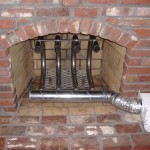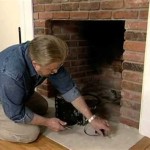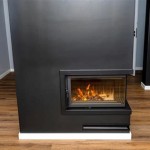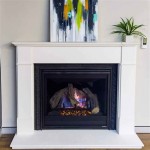Can A Wood Burning Fireplace Be Converted To Electric?
The question of whether a wood-burning fireplace can be converted to electric is a common one among homeowners seeking to modernize or simplify their home heating. The answer is a definitive yes, it is possible, and often a practical solution. Converting a wood-burning fireplace to electric offers several advantages, including reduced maintenance, easier operation, and improved energy efficiency in certain situations. However, the process involves several considerations, from choosing the right electric fireplace insert to ensuring proper installation and safety. This article will provide a comprehensive overview of the conversion process, outlining the key points to consider before undertaking such a project.
A traditional wood-burning fireplace, while aesthetically pleasing and capable of providing significant heat, also presents several challenges. It requires a consistent supply of firewood, which can be costly and physically demanding to acquire and store. The process of building and maintaining a fire can be time-consuming, and cleaning up ashes is a regular chore. Furthermore, wood-burning fireplaces can contribute to indoor air pollution and pose potential safety hazards if not properly maintained and operated. Converting to an electric fireplace eliminates most of these drawbacks, offering a cleaner, more convenient, and potentially more cost-effective solution.
There are different types of electric fireplace inserts available, each with its own set of features and benefits. Choosing the right insert is crucial for achieving the desired aesthetic and functional outcomes. The conversion process itself is typically straightforward, but it is essential to follow proper safety guidelines and consider the specific requirements of the existing fireplace and the chosen electric insert.
Key Point 1: Selecting the Right Type of Electric Fireplace Insert
The first step in converting a wood-burning fireplace to electric is selecting the appropriate type of electric fireplace insert. Several options are available, each offering different features, heating capacities, and aesthetic styles. The most common types include:
Electric Fireplace Logs: These are designed to mimic the appearance of a real wood fire, often featuring realistic-looking logs and flickering flame effects. They are relatively easy to install, typically requiring only placement within the existing firebox and connection to a standard electrical outlet. Electric fireplace logs are a good choice for homeowners who primarily desire the visual appeal of a fire and supplemental heat.
Electric Fireplace Inserts with Mantels: These units combine an electric fireplace insert with a decorative mantel, creating a complete and self-contained fireplace unit. They offer a more substantial aesthetic than electric fireplace logs and can be placed directly against a wall, making them suitable for spaces that do not already have a fireplace. However, they may require more space and a dedicated electrical circuit.
Built-in Electric Fireplace Inserts: These inserts are designed to be recessed into a wall or custom-built enclosure. They offer a sleek and modern look and can be customized to fit specific design preferences. Built-in inserts typically require professional installation and may involve modifying the existing fireplace opening.
Electric Fireplace Stoves: Resembling traditional wood-burning stoves, these units offer a vintage or rustic aesthetic. They are freestanding and can be easily moved from one location to another. Electric fireplace stoves are a good option for adding a touch of charm to a room without the complexities of a wood-burning stove.
When selecting an electric fireplace insert, it is important to consider the size of the existing fireplace opening, the desired heating capacity, the aesthetic style, and the available electrical power. Measure the dimensions of the firebox carefully and choose an insert that fits comfortably within the space. Evaluate the heating needs of the room and select an insert with sufficient BTU (British Thermal Units) output. Consider the overall style of the room and choose an insert that complements the existing decor.
Also, assess the electrical requirements of the chosen insert. Most electric fireplaces require a standard 120-volt outlet, but some larger units may require a dedicated 240-volt circuit. Consulting with a qualified electrician is recommended to ensure that the electrical system can safely handle the power demands of the chosen insert.
Key Point 2: Preparing the Existing Wood-Burning Fireplace for Conversion
Before installing an electric fireplace insert, it is necessary to prepare the existing wood-burning fireplace. This involves several steps to ensure a safe and aesthetically pleasing installation.
Cleaning the Fireplace: The first step is to thoroughly clean the fireplace and chimney. Remove all ashes, soot, and debris from the firebox. Use a stiff brush and a vacuum cleaner to remove any remaining residue. If the chimney has not been professionally cleaned recently, it is advisable to hire a chimney sweep to inspect and clean the flue. This will help prevent potential fire hazards and ensure proper ventilation.
Sealing the Chimney Flue (Optional): While not always necessary, sealing the chimney flue can help prevent drafts and improve energy efficiency. A chimney flue is the passageway within the chimney that carries smoke from the fireplace to the outside. Sealing the flue prevents cold air from entering the house during the winter and hot air from escaping during the summer. This can be done using a chimney balloon or a specialized chimney sealant.
Closing the Damper: The damper is a metal plate that regulates the airflow through the chimney. Ensure that the damper is closed to prevent drafts and keep out insects and animals. In some cases, it may be necessary to permanently seal the damper to prevent it from being accidentally opened. This can be done by wedging it shut or using a specialized damper sealant.
Preparing the Fireplace Opening: Depending on the type of electric fireplace insert being used, it may be necessary to modify the fireplace opening. For example, if installing a built-in insert, the opening may need to be enlarged or reframed to accommodate the insert's dimensions. If installing electric fireplace logs, it may be necessary to create a level surface within the firebox.
Installing an Electrical Outlet: If the existing fireplace does not have a nearby electrical outlet, it will be necessary to install one. An electrician should install a dedicated outlet with sufficient amperage to handle the electrical load of the chosen insert. The outlet should be located within easy reach of the insert's power cord. It is important to follow all applicable electrical codes and safety regulations when installing the outlet.
Careful preparation of the existing fireplace is essential for a successful conversion to electric. Taking the time to clean the fireplace, seal the chimney flue, and prepare the fireplace opening will ensure a safe, efficient, and aesthetically pleasing installation.
Key Point 3: Installation and Safety Considerations
Once the electric fireplace insert has been selected and the existing fireplace has been prepared, the next step is to install the insert. Proper installation is crucial for ensuring safe and efficient operation.
Following Manufacturer Instructions: Always follow the manufacturer's instructions when installing an electric fireplace insert. The instructions will provide specific guidance on how to properly install the insert and connect it to the electrical system. Failure to follow the instructions could result in damage to the insert or create a safety hazard.
Ensuring Proper Ventilation: Electric fireplaces require proper ventilation to prevent overheating. Ensure that the insert is not blocked or obstructed in any way. Allow adequate space around the insert for air to circulate. Some inserts may have specific ventilation requirements, such as the need for a vent or fan. Refer to the manufacturer's instructions for details.
Checking Electrical Connections: Before operating the electric fireplace, carefully check all electrical connections to ensure that they are secure. Make sure that the power cord is not frayed or damaged. Do not overload the electrical circuit by plugging too many appliances into the same outlet. If there are any concerns about the electrical system, consult with a qualified electrician.
Testing the Fireplace: After installing the electric fireplace, test it to ensure that it is operating properly. Turn on the fireplace and observe the flame effects and heating elements. Make sure that the controls are functioning correctly. If there are any problems, consult the manufacturer's troubleshooting guide or contact customer support.
Safety Precautions: Even though electric fireplaces are generally safe to operate, it is important to take certain safety precautions. Keep flammable materials away from the fireplace. Do not leave the fireplace unattended while it is operating. Keep children and pets away from the fireplace to prevent burns. Install smoke detectors and carbon monoxide detectors in the vicinity of the fireplace. Regularly inspect the fireplace for any signs of damage or malfunction.
Professional Installation: While many electric fireplace inserts can be installed by homeowners, it is often advisable to hire a professional installer. A professional installer will have the experience and expertise to ensure that the insert is installed safely and correctly. They can also provide guidance on choosing the right insert for the specific needs and budget. Hiring a professional installer can provide peace of mind and guarantee a successful conversion.
In summary, converting a wood-burning fireplace to electric is a feasible and often desirable home improvement project. By carefully selecting the right type of electric fireplace insert, properly preparing the existing fireplace, and following proper installation and safety guidelines, homeowners can enjoy the benefits of a modern, convenient, and energy-efficient heating solution.
The cost of converting a wood-burning fireplace to electric can vary depending on the type of insert chosen, the complexity of the installation, and the cost of labor. Electric fireplace logs are generally the least expensive option, while built-in inserts and units requiring significant modifications to the fireplace opening can be more costly. It is important to obtain multiple quotes from different installers and to factor in the cost of any necessary electrical work. However, even with the initial investment, the long-term cost savings associated with reduced maintenance and lower energy bills can make the conversion a worthwhile investment.
Ultimately, the decision of whether to convert a wood-burning fireplace to electric depends on individual needs and preferences. However, for homeowners seeking a cleaner, more convenient, and potentially more cost-effective heating solution, an electric fireplace insert can be an excellent choice.

How To Convert Your Wood Burning Fireplace Electric Or Gas

Convert A Gas Or Wood Fireplace To An Electric

Diy Fireplace Makeover How To Convert A Wood Burning An Touchstone Home S Inc

Wood Burning To Electric Fireplace Conversion

Converting Your Fireplace To Electric Royal Oak Mi Fireside Hearth
Electric Fireplace Inserts Vs Logs Heat Glo

ᑕ❶ᑐ How To Turn Your Fireplace Into An Electric

How To Convert Your Wood Burning Fireplace Electric Or Gas

How To Convert Your Wood Or Gas Fireplace Electric

How To Convert Your Wood Burning Fireplace Electric Or Gas
Related Posts








